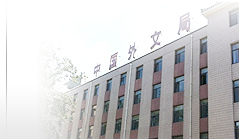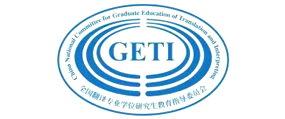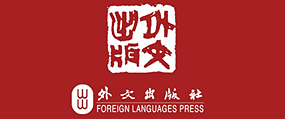译论研究
试论中西语境下的“翻译的政治”研究 / 胡翠娥 杨卉 / 5
斯皮瓦克翻译思想探究 / 李红玉 / 12
西方同声传译研究的新发展——一项文献计量研究 / 高彬柴明 / 17
社区口译新趋势—电话口译 / 肖晓燕 郁锐玲 / 22
译史纵横
译者的隐身—论傅译作品的语体选择 / 胡安江 许钧 28
书刊评介
异化与归化:道德态度与话语策略——韦努蒂《译者的隐形》第二版评述 / 郭建中 / 34
学人访谈
挣脱理性桎梏,回归人文关怀——美国翻译理论家道格拉斯·罗宾逊教授访谈
/ 朱琳 高乾 刘艳春 / 39
翻译教学
翻译师资培训:翻译教学成功的关键 / 鲍川运 / 45
翻译教学的发展与TOT计划的实施 / 任文 / 48
译作鉴析
林语堂对中国传统书法理论的译介 / 顾毅 / 53
学术争鸣
“不折腾”英译大家谈 / 施燕华、杜艳等 / 58
译技探讨
论汉英法律翻译中的形式对等问题 / 金朝武 / 62
论读者创新期待 / 丛滋杭 / 68
汉英短语翻译中的“趋避”意识与翻译策略探讨 / 孟祥春 / 74
自学之友
·译家译作·
英译汉:The Big Bull Market (Frederick Lewis Allen) / 刘庆荣译 / 79
翻译导读:背景知识与理解 / 刘庆荣 / 80
汉译英:银杏(郭沫若) / 史志康译 / 82
翻译导读:赏心悦目的多彩文字 不尽相同的思维模式 / 史志康 / 84
·新人新作·
习作:The Proposal (Mair Hamilton) / 周晔译 / 88
点评:在目标语中发现“原文的回声”——读《求婚》译文有感 / 孙致礼 / 90
词语选译
中国译协对外传播翻译委员会中译英研讨会最新讨论词汇选登 / 93
英文摘要 / 94
信息广角
国际译学期刊Translation and Cross-Cultural Studies创刊号征稿(11)
第二十一届韩素音青年翻译奖竞赛汉译英原文更正(44)
第二十一届韩素音青年翻译奖竞赛补充通知(96)
《中国翻译》创刊30周年暨出版200期翻译研究有奖征文(封底)
本刊稿约(27) 本刊邮购信息(92) 会讯(73、78)
《第十八届世界翻译大会论文集》邮购信息(52)
中文摘要
试论中西语境下的“翻译的政治”研究
胡翠娥 南开大学 杨卉 安徽农业大学
摘 要: 中西语境下“翻译的政治”研究既有相同点,也有不同点。在西方后殖民语境下,“翻译的政治”或者对历史上翻译活动如何塑造他者的文化身份,同时也重构自身 的文化身份现象进行描写分析;或者对译者的暴力侵犯和漫不经心的改窜给原作的艺术性和意识形态造成的损害和扭曲进行严厉的批判;或者作为一种文化批评实 践。国内的研究则多结合本国的翻译历史展开论述,主要把它作为一个描述性命题,着重分析历史上的翻译事实,而对它作为一种批判工具和批评实践则少有注意。
关键词:翻译的政治;后殖民语境;后结构主义;文化批评
中图分类号:H059 文献标识码:A 文章编号:1000-873X (2009)02-0005-07
斯皮瓦克翻译思想探究
李红玉 上海外国语大学
摘 要: 斯皮瓦克是当今世界著名的文学理论家和文化批评家。随着翻译研究文化转向的发生,她的翻译思想和实践逐渐引起了国际译学界的重视。在我国,翻译研究者对斯 皮瓦克还缺乏足够关注,认识上也存在一定局限。为弥补这一缺憾,本文全面考察了斯皮瓦克有关翻译的论述,尝试从翻译的本质、作为暴力的翻译、作为阅读的翻 译和普遍意义上的翻译四个方面展现斯皮瓦克翻译思想的丰富内涵。
关键词:斯皮瓦克;翻译;暴力;阅读;普遍意义上的翻译
中图分类号:H059 文献标识码:A 文章编号:1000-873X (2009)02-0012-05
西方同声传译研究的新发展——一项文献计量研究①
高彬 对外经济贸易大学 柴明 上海外国语大学
摘 要:西方一直引领着口译研究的潮流。然而,我国对于西方口译研究在新世纪的研究现状和动向尚欠深入探究。本文利用文献计量方法对2000-2008年的西方同声传译研究的主题及其分布和研究方法进行了深入分析,从中发现:认知是新世纪同声传译研究的核心主题,而实证分析是研究的主要方法。
关键词:口译;口译研究;同声传译
中图分类号:H059 文献标识码:A 文章编号:1000-873X (2009)02-0017-05
社区口译新趋势—电话口译
肖晓燕 郁锐玲 厦门大学
摘 要: 随着来华居住的外籍人士不断增加,中国这样一个非传统移民国家也开始有了对社区口译的较大需求。针对国内口译界一直较多关注会议口译而忽视其他口译形式的 现状,本文对社区口译的概念、特点及其研究历史进行了简要回顾,重点探讨了社区口译中出现的电话口译这一新趋势。文章以美国为例述介了电话口译兴起的政治 经济背景及其目前的发展态势,剖析了电话口译的交际特征,对比了电话口译与传统的面对面口译各自具有的优势与局限,最后分析了影响电话口译未来在中国发展 的几大要素。
关键词:社区口译;电话口译;面对面口译
中图分类号:H059 文献标识码:A 文章编号:1000-873X (2009)01-0022-06
译者的隐身—论傅译作品的语体选择*
胡安江 四川外语学院 许钧 南京大学
摘 要: 傅雷对于译文语体的选择首先是从自己的审美理想出发的,但于此同时他考虑更多的是译文的流畅性和可读性以及目标读者的可接受性。“神似”说的翻译理论话语 在此翻译理念下得以最终形成,而这种理论话语具体到翻译语体的选择上,傅译作品便普遍体现出“本土化”的倾向。这种倾向表现在他对源语语言文字和句法结构 的中国式改造上,以此实现傅雷所谓的“理想的译文仿佛是原作者的中文写作”的翻译理想。
关键词:傅雷;审美理想;目标读者;本土化;译者的隐身
中图分类号:H059 文献标识码:A 文章编号:1000-873X (2009)02-0028-06
异化与归化:道德态度与话语策略——韦努蒂《译者的隐形》第二版评述
郭建中 浙江大学
摘 要: 《译者的隐形》第二版,是作者韦努蒂对第一版出版以来在世界翻译界引起的诸多的误解、辩论、争议和批评所作出的回应。在新版中,作者澄清了一些误解,进一 步阐发了一些重要的理论概念,并对该书的批评作出了回答。同时,新版增加了新的个案研究,更新了有关翻译现状和出版情况的数据,在全书的体例上和措辞上也 作了少些修改。本文拟结合笔者对韦努蒂的访谈,就韦努蒂关于异化、归化等重要概念的补充阐发,作简要的介绍,并阐述自己的有关看法。
关键词:异化;归化;道德态度;话语策略;暴力;抵抗
中图分类号:H059 文献标识码:A 文章编号:1000-873X (2009)02-0034-05
翻译教学的发展与TOT计划的实施
任文 四川大学
摘 要: 要培养符合市场需求的应用型、操作型翻译人才,必须首先拥有一支更新了翻译教学理念,能够把握翻译教学规律、开展技能化、语境化的翻译教学活动而非仅仅视 翻译课程为语言教学辅助手段的高素质翻译教学队伍;而实施建立在成人学习原则基础上的“培训者培训”计划是提高翻译教学队伍素质,促成教师在教学理念和行 为上发生变革的有效手段。
关键词:翻译教学;应用型口笔译人才;“培训者培训”计划;成人学习
中图分类号:H059 文献标识码:A 文章编号:1000-873X (2009)020048-05
林语堂对中国传统书法理论的译介
顾毅 天津科技大学
摘 要:本文以林语堂英文著作《吾国与吾民》(My Country and My People)中“中国书法”(Chinese Calligraphy)一节为研究对象,分析林语堂对中国书法的译介策略、“中国书法”与中国古代书法理论文本的互文关系以及林语堂在译介书法基本要素过程中所传递的书法的师法自然、天人合一的精神。
关键词:林语堂;中国书法;译介
中图分类号:H059 文献标识码:A 文章编号:1000-873X (2009)02-0053-05
论读者创新期待
丛滋杭* 浙江树人大学
摘 要:关于文学翻译批评,“忠实论”和“创新论”之间的唇枪舌剑此起彼伏,从未停止过。这种非理性、非科学的态度、“见仁见智”的批评,无法上升到理论高度而具有说服力。本文运用西方接受美学,结合古汉诗英译实例,论述读者对文学翻译的创新期待。
关键词:创新期待;读者;汉诗英译
中图分类号:H059 文献标识码:A 文章编号:1000-873X (2008)06-0068-06
汉英短语翻译中的“趋避”意识与翻译策略探讨
孟祥春 苏州大学
摘 要: 汉英短语在思维模式、表达手段、意象、典故、辞格以及视角等诸多层面都有着宏观与微观的差异与相似之处。译者一方面有“趋同”心理,即力求译语与源语在意 义、风格、色彩、形象、甚至是音韵方面的无限靠近;另一方面,当译语与源语在结构、语序以及形象等相似度很高时,往往又会产生“规避”心理,以避免疑似的Chinglish以及文化误解。“趋避”过度都十分危险,译者应平衡“趋避意识”。为此,本文提出了汉英短语翻译的六种策略,即视角转换、情景再现、意象置换、仿拟化用、典故融通与灵感创造。
关键词:汉英短语翻译;“趋避意识”;翻译策略
中图分类号:H059 文献标识码:A 文章编号:1000-873X (2009)02-0074-05
Contents
Conceptualizing Politics of Translation in the Chinese and the Western Context / Hu Cui’e 5
Spivak as a Theorist of Translation / Li Hongyu 12
A Bibliometric Analysis of New Developments in Simultaneous Interpreting Studies in the WestGao Bin & Chai Mingjiong / 17
Telephone Interpreting as a New Trend in Community Interpreting / Xiao Xiaoyan & Yu Ruiling / 22
The Translator’s Invisibility and the Lingo-stylistic Determination of Fu Lei’s Translation / Hu Anjiang & Xu Jun 28
Foreignization and Domestication Revisited: The New Edition of Venuti’s The Translator’s Invisibility / Guo Jianzhong 34
An Interview with Professor Douglas Robinson / Zhu Lin, Gao Qian & Liu Yanchun 39
Development of Professional Translation/Interpreting Teaching and Implementation of the TOT Project / Ren Wen 48
Lin Yutang’s Translational Strategies for Introducing the Art of Chinese Calligraphy to the English-speaking World / Gu Yi 53
The Readers’Expectation for Innovation as a Justification for Creative Literary Translation / Cong Zihang 68
To Get Close to or to Back Away from: Strategies for English Translation of Chinese Phrases / Meng Xiangchun / 74
E/C Translation Practice: The Big Bull Market ( Frederick Lewis Allen) / Liu Qingrong 79
C/E Translation Practice: Gingko(Guo Mo-ruo)Shi Zhikang 82
English Abstracts of Major Papers in This Issue / 94
English Abstracts of Major Papers in This Issue
Conceptualizing Politics of Translation in the Chinese and the Western Context
by Hu Cui’e (NankaiUniversity,Tianjin,China) & Yang Hui (Anhui Agriculture University,China) p.5
Abstract: Politics of translation has been conceptualized differently inChinaand in the West. The Western approach to this topic tends to be set in a post-colonial context, serving either to throw light on how translation helps construct the cultural identities of the Self and the Other, or to expose how violence and distortion have been committed throughout the translating process. In addressing issues under this heading, theorists launch a critique of cultural practices. In the Chinese context, however, the same topic leads mainly to descriptive analysis of translational events in Chinese history, with little attention paid to exploring its potentials for critical and cultural practices.
Key words: politics of translation; post colonial context; post-structuralism; cultural criticism
Spivak as a Theorist of Translation
by Li Hongyu (ShanghaiInternationalStudiesUniversity,Shanghai,China) p.12
Abstract: One of the most celebrated literary and cultural critics in the world, Spivak’s thought on translation has sparked heated discussions in the West since the 1990s. Yet little has been published inChinaabout her thinking in this important area of studies and she remains a virtual unknown toChina’s scholars of translation. To address the deficiency, this paper takes a close look at her translation-related publications and offers an account of her thoughts on the nature of translation, especially on translation as violence and translation as reading.
Key words: Spivak; translation; violence; reading
A Bibliometric Analysis of New Developments in Simultaneous Interpreting Studies in the West
by Gao Bin ( University of International Business and Economics, Beijing ,China) &Chai Mingjiong (Shanghai International Studies University, Shanghai, China) p.17
Abstract: Until recently,China’s scholars of interpreting had turned their attention primarily to 20th-century Western interpretation theories, what is being achieved by their international colleagues in the 21st century remains under-researched. To update our knowledge of the developments in this field, the authors of this paper conduct a survey of relevant publications from 2000 to 2008. Their bibliometric study indicates that cognitive issues increasingly dominate discussions on interpreting in recent years while empirical study continues to be the most commonly used method of investigation.
Key words: interpreting; interpreting studies; simultaneous interpreting
Telephone Interpreting as a New Trend in Community Interpreting
by Xiao Xiaoyan & Yu Ruiling(Xiamen University Xiamen, China)p.22
Abstract: Though a non-immigrant country,Chinahas been receiving an increasing number of short- and long-term overseas visitors over the years and is hence in a growing need for community interpreting (CI) , a form of interpreting neglected inChina. After a brief introduction to CI and the history of its research, this paper focuses on a new area of its application, i.e., telephone interpreting (TI). Using theUnited Statesas a case study, the authors analyze the reasons behind the boom of TI, examine its communicative features, and compare it with face-to-face interpreting. The paper ends with an exploration of possible factors that may impact future development of TI inChina.
Key words: community interpreting; telephone interpreting; face-to-face interpreting
The Translator’s Invisibility and the Lingo-stylistic Determination of Fu Lei’s Translation
by Hu Anjiang (SichuanInternationalStudiesUniversity,Chongqing,China)
& Xu Jun (NanjingUniversity,Nanjing,China) p.28
Abstract: The lingo-stylistic determination of Fu Lei’s translation can be accounted for by referring to the aesthetic ideals he upheld, the importance he attached to fluency and readability of translations, and his concern for the target readers’ acceptability. And this determination in turn accounts for his espousal of “bearing a spiritual resemblance to the original” as a guiding principle for translation and for the marked domesticating tendency that informs his translational works. Inspired by this principle, he believed that ideally, a translation should read like “the original author writing in the target language.” To produce such effects, he would not hesitate to transform the source language’s lexical and syntactic features.
Key words: Fu Lei; aesthetic ideal; target reader; domestication; the translator’s invisibility
Foreignization and Domestication Revisited: The New Edition of Venuti’s The Translator’s Invisibility
by Guo Jianzhong (ZhejiangUniversity,Hangzhou,China) p.34
Abstract: The Translator’s Invisibility: A History of Translation (Second Edition) is Venuti’s response to the misunderstandings, debates, controversies and criticisms which its first edition has given rise to among translation scholars around the world. In this new edition, he clarifies and further develops some key ideas and arguments, adds new case studies, and updates his statistical account of the current state of translation. Calling attention to how Venuti has redefined the most important concepts in his theory, including foreignization and domestication, this paper offers some tentative comments on the development of his thinking on translation.
Key words: foreignization; domestication; ethical attitude; discursive strategy; violence; resistance
Development of Professional Translation/Interpreting Teaching and Implementation of the TOT Project
by Ren Wen (SichuanUniversity,Chengdu,China) p.48
Abstract: To train professional translators/interpreters that conform to the market needs, we must first and foremost have a large contingent of qualified instructors that are equipped with renovated training concepts, understand the law of professional translation/interpreting training, and are able to conduct skill-oriented, contextualized teaching rather than language teaching. The implementation of the “Training of Trainers” project based on adult learning principles is an effective tool to improve the qualifications of the instructors and to induce conceptual, attitudinal as well as behavioural changes in their instruction.
Key words: professional translation/interpreting teaching; “Training of Trainers” project; adult learning
Lin Yutang’s Translational Strategies for Introducing the Art of Chinese Calligraphy to the English-speaking World
by Gu Yi (Tianjin University of Science Technology,Tianjin,China) p.53
Abstract: Looking closely into the Chapter on “Chinese Calligraphy” in My Country and My People, this article discusses the translational strategies Lin Yutang employed for introducing Chinese calligraphy to the English-speaking world, calling attention in particular on how he conveyed to the target readers the animistic principle embodied in the art and a sense of intertextuality between the art and ancient Chinese texts on calligraphy.
Key words: Lin Yutang; Chinese calligraphy; translating
The Readers’Expectation for Innovation as a Justification for Creative Literary Translation
by Cong Zihang (ZhejiangShurenUniversity,Hangzhou,China) p.68
Abstract: The never-ending battle in the studies of literary translation between those who emphasize fidelity to the original and those who advocate more room for the translator’s creativity has resulted in a melee in this area of inquiry. Both camps are so dogmatic and so unsupported theoretically that their positions are equally devoid of persuasiveness. This article is sympathetic with the second position, yet it tries to shore up the claim for more creativity in literary translation with a careful analysis of exemplary English translations of Chinese poems, and especially by referring to the readers’ multiple-fold expectation for innovations in the translated works.
Key words: creativity; innovation; expectation; reader; Chinese poem; literary translation
To Get Close to or to Back Away from: Strategies for English Translation of Chinese Phrases / by Meng Xiangchun(Soochow University, Suzhou,China)p.74
Abstract: Macro and micro differences and similarities in thought patterns, expression vehicles, images, allusions, rhetorical devices, description perspectives, etc. exist between Chinese and English phrases. In dealing with these differences, translators of Chinese phrases are often torn between two conflicting inclinations: to get as close as possible to the original in signification, style, image and even rhythmic or rhyming pattern, or to back away deliberately from an identification with these features in order to avoid leaving the impression of a Chinglish rendition. Arguing against yielding to either of these inclinations, this paper calls upon translators to strike a graceful balance between the two extremes, and goes on to offer six specific strategies for turning Chinese phrases into English.
Key words: E-C translation; Chinese phrases; “approximating and shunning”; translation strategies

















